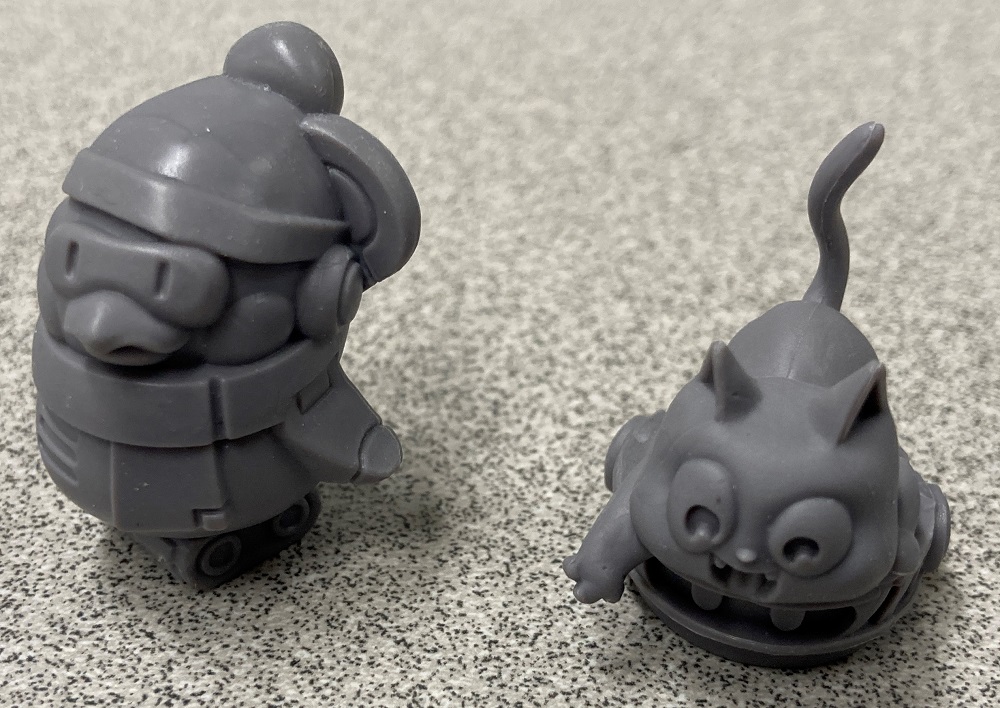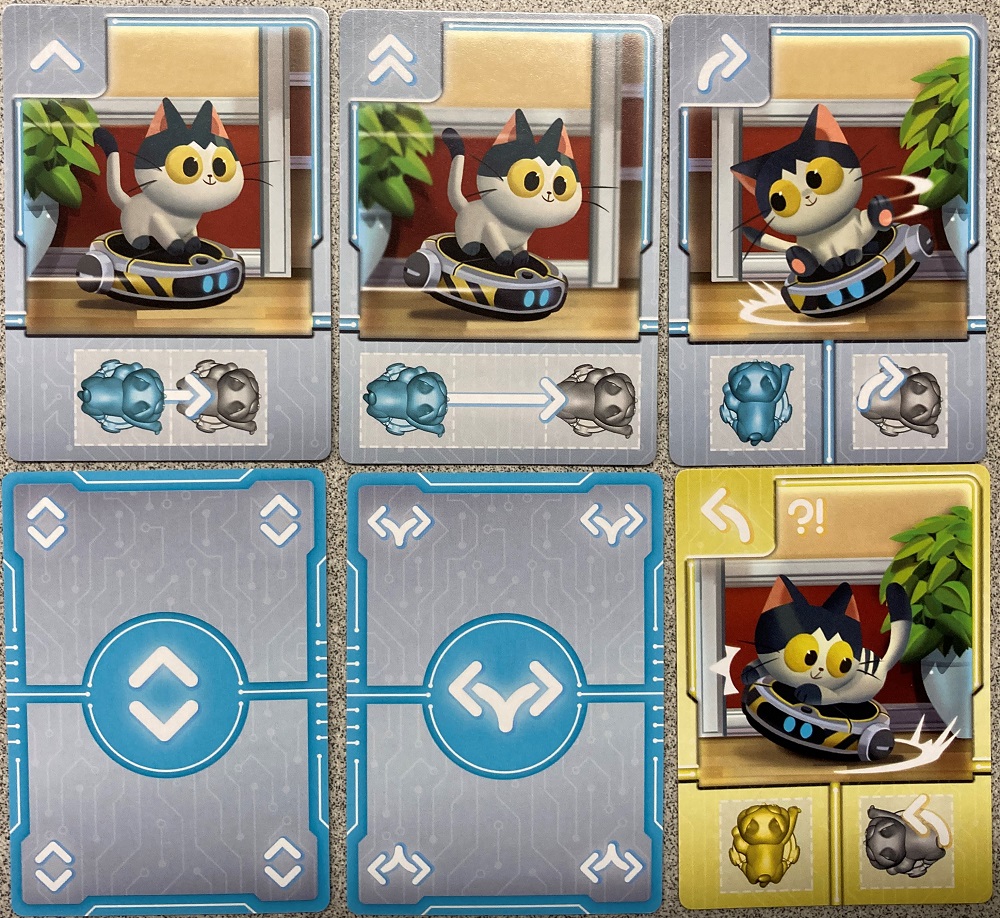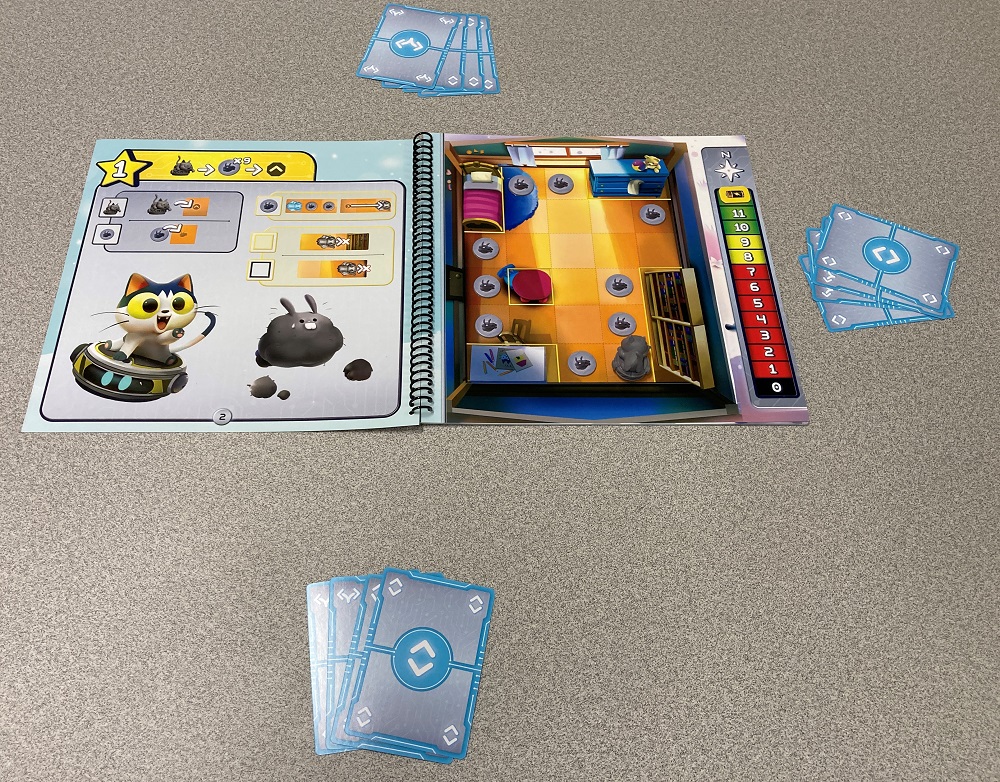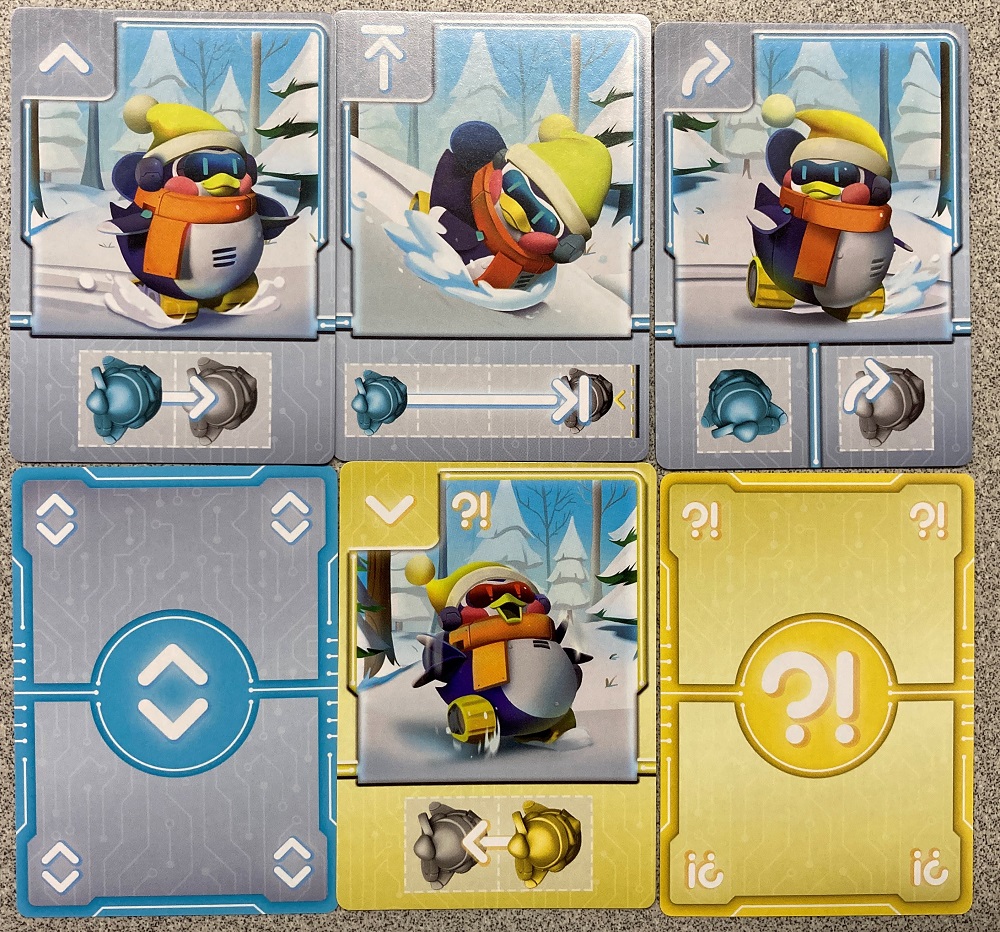‘Quirky Circuits: Penny and Gizmo’s Snow Day’ Brings More Challenges to Your Tabletop

As kids are home from school during summer break, parents are always looking for ways to keep their brains engaged and thinking so they are ready to return to school in the fall. Many are also looking for activities that do not involve electronic devices and encourage them to play with other people at the same time. Tabletop games are a great way to achieve these two objectives. Quirky Circuits: Penny and Gizmo’s Snow Day is a fun way to engage players in cooperative puzzle solving while also teaching basic coding concepts which are included in many math and science curriculums. Plus it is a lot of fun to play.
What Is Quirky Circuits: Penny and Gizmo’s Snow Day?
Quirky Circuits: Penny and Gizmo’s Snow Day is a programming game for 2-4 players, ages 8 and up, and takes about 15-30 minutes to play a scenario. You can purchase the game from your FLGS or from Amazon for $19.95. Quirky Circuits: Penny and Gizmo’s Snow Day was designed by Nikki Valens and published by Plaid Hat Games, with illustrations by Danalyn Reyes.
Quirky Circuits: Penny and Gizmo’s Snow Day Components
Here is what you get inside the box:
- 1 Scenario Book
- 2 Robot miniatures
- 2 Robot reference cards
- 38 Command cards
- 1 Battery marker
- 16 Scenario tokens
- 1 Rulebook

The game includes two different robot miniatures. Gizmo is a cat on top of a robotic vacuum cleaner who must defeat all of the dust bunnies around a house. Penny is a robotic penguin who likes to ski. Handy reference cards are included to help remind players about each character’s special rules.

The 20 page scenario book is used to play the 10 included scenarios. During a game, the scenario book is opened to the current scenario. The page on the left contains the objective for that scenario and any special rules that apply to it. The page on the right has the map on which the scenario is played as well as a battery marker to keep track of turns.

Command cards are what players use to code or give directions to their robot. There is a deck of command card for each robot as well as special cards labeled with a ?! on them which are called for only in certain scenarios.

Quirky Circuits also includes a battery marker and several tokens which are called for by specific scenarios. Gizmo’s scenarios require the dust bunny tokens as well as vase tokens while Penny’s scenarios use the flag tokens.
How to Play Quirky Circuits: Penny and Gizmo’s Snow Day
You can download a copy of the rulebook here.
The Goal
The goal of the game is to complete the objectives of the current scenario within the set amount of turns which is measured in battery power.
Setup
Players select a scenario from the scenario book. It is suggested they play through the scenarios in order since they increase in difficulty and scenarios tend to build on rules introduced in in previous scenarios. The scenario book has all the directions for setting up the current scenario while the rulebook offers additional details. Collect the reference card and place the required robot on the starting space facing in the indicated direction. Place the battery marker in the highest space of the battery track which keeps track of the number of rounds you have played. Place tokens in spaces as called for in the scenarios directions. Next sort out the command cards specific to the robot being used and any yellow Quirk cards with ‘?!’ on the back that are required for the scenario and then shuffle this deck. Finally deal out four cards to each player (or five cards for a 2-player game) to form their hand. You are now ready to start the game.

Gameplay
Quirky Circuits is played in rounds consisting of three phases: Program, Execute, and Reset. During the program phase, players play cards from their hand to create a program queue. Players do not take turns. Instead, any player can play as many cards as they want at any time. Cards must be played face down from left to right in a line and can only be added to the end of the queue. The challenge is that players are not allowed to talk during this phase or otherwise communicate which cards are in their hand, their strategy, or make suggestions to other players. The backs of the cards have symbols that indicate if it is a move, turn, or pickup/drop command card. However, it does not let players know how far to move or which direction to turn. Players must play at least 5 cards to the queue and can indicate that they are done by placing both hands on the table. When playing with younger players or learning the game, the rules suggest playing cards into the queue face up which can help alleviate frustration for beginners.
Once players are done programming, they now execute the queue by turning over one card at a time, going from left to right. After each card is revealed, the robot miniature is moved to reflect the card. This continues until all cards in the queue have been revealed and executed. Rules for the scenarios and for each robot describe what to do if certain situations occur such as the robot moves into a wall or other obstacle.

After the program has been completed it is time to reset. Collect the command cards from the queue, shuffle them, and then place them at the bottom of the deck. Move the battery marker down one space on the track, and finally deal out command cards to fill out each players hand to either four or five cards depending on the number of players. You are now ready to start the next round with the program phase.
Game End
The game ends when the players have completed their objective or the battery marker has reached the zero space. The battery marker also has red, yellow, and green spaces. If you can end in the yellow spaces, you are doing well. However, you will need to be experts to end in the green spaces.
Why You Should Play Quirky Circuits: Penny and Gizmo’s Snow Day
Quirky Circuits: Penny and Gizmo’s Snow Day is a fast-paced game. Since each scenario only takes about 15-30 minutes to play, you can play a quick game or play several scenarios during a gaming session. If you fail to complete a scenario before battery power runs out, quickly reset the game and try again. There are five scenarios for each of the two robots. I really like that each robot’s scenarios are completely different. Gizmo focuses on vacuuming up dust bunnies around a house. When it runs into a wall, it turns left. Later scenarios add vases on top of tables. If Gizmo runs into a table, the vase falls and shatters, making one more mess to clean up to win the level. Penny’s scenarios involve snow skiing and collecting flags. When she moves across a slope going down, she will slide and continue moving until she collides with another slope or barrier. Using the momentum of a slide adds a bit more challenge as players try to get plan their code to take advantage of the slopes.
I like how players have to work together to create a code without talking. Trying to figure out what cards others have played based on the back of the card gives you an idea of what was played. However, the inclusion of Quirk cards makes it even tougher since ‘?!’ is the symbol on the back of these yellow cards. In addition, players must play their yellow ?! cards before any others in their hand. There are only two possibilities for each cards, so players have to determine which of the two another player added to the queue. These cards are not added until after players have learned to program the robots during the first four scenarios.

At the start of this article, I mentioned the importance of having children learn the basics of coding. While Quirky Circuits: Penny and Gizmo’s Snow Day is not heavy on the coding of complex programs, the game does teach the logic and step by step process of creating algorithms. This is very apparent during the execute phase as the robots follow the command cards to the letter despite the intent of the players. These mistakes are bugs in the code. However, instead of going back to the start and trying again, players now have to continue from where they left off and make corrections on the go.
Our family enjoys playing Quirky Circuits: Penny and Gizmo’s Snow Day. I have also used it in my science and computer science classes. Everyone had a lot of fun, even while groaning over mistakes. In the past, I have played other programming type games. However, those games had players coding their own robots or characters and often they were competitive rather than cooperative. The way players have to add cards to the queue at any time during the program phase and not communicate can at first be frustrating. However, after a while, players learn to read the intent of the others. Even though players can’t communicate, there is a lot of interaction in this game and when mistakes are revealed during the execute phase, those can be almost as fun as getting everything perfect. I highly recommend this game for families with children 8 years and up as well as adults who like playing cooperative tabletop games.
If Quirky Circuits: Penny and Gizmo’s Snow Day sounds like a game for you and your family, check it out on Amazon.
Click here to see all our tabletop game reviews.
![]() To subscribe to GeekDad’s tabletop gaming coverage, please copy this link and add it to your RSS reader.
To subscribe to GeekDad’s tabletop gaming coverage, please copy this link and add it to your RSS reader.
Disclosure: GeekDad received a copy of this game for review purposes.
Click through to read all of "‘Quirky Circuits: Penny and Gizmo’s Snow Day’ Brings More Challenges to Your Tabletop" at GeekDad.If you value content from GeekDad, please support us via Patreon or use this link to shop at Amazon. Thanks!

